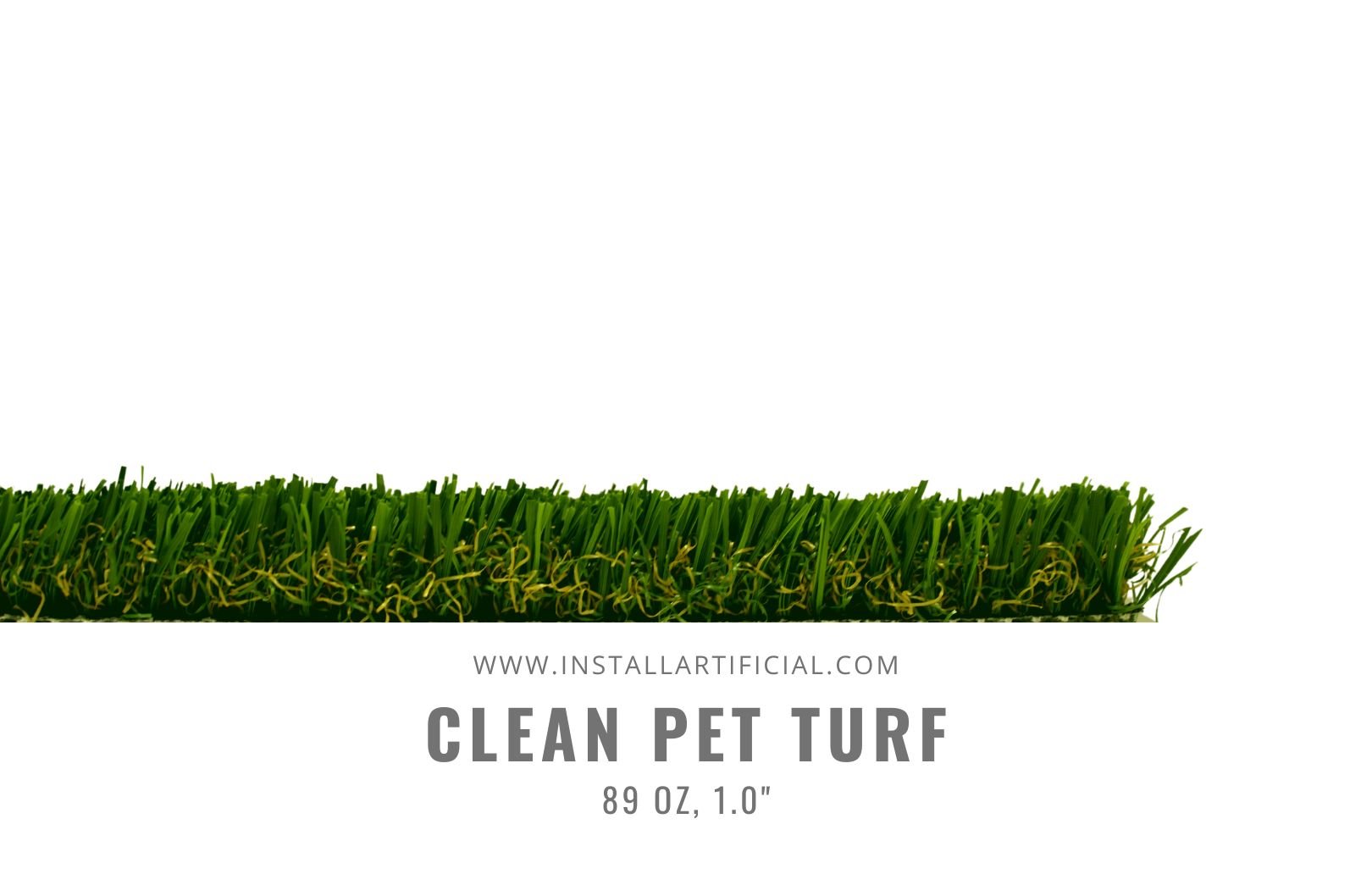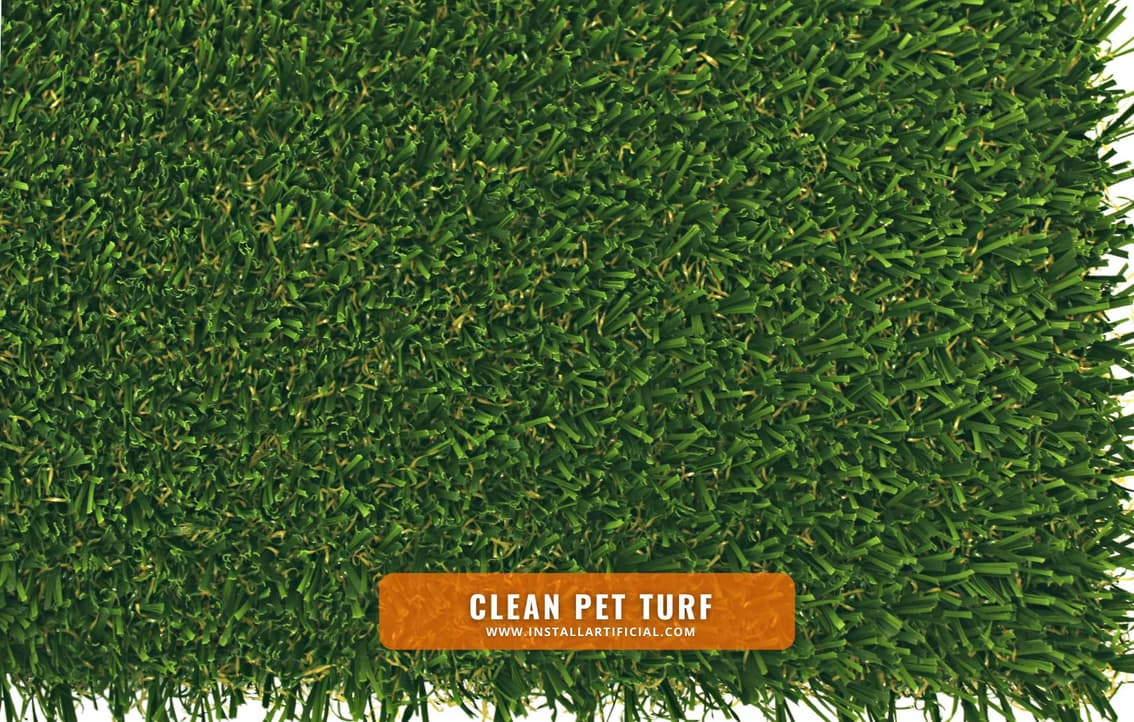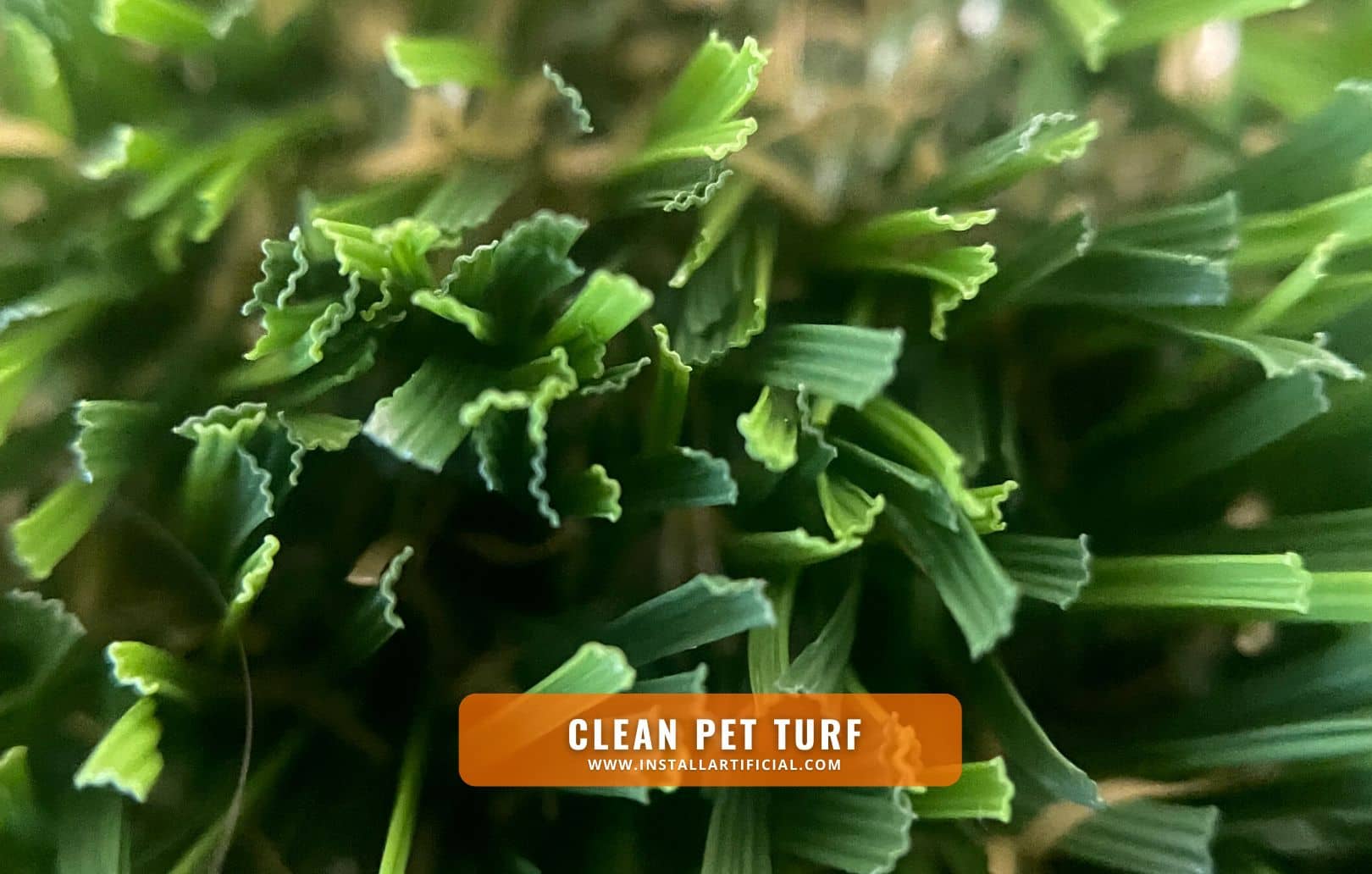Clean Pet Turf
89 oz, 1.0" Height, Curvy W Blade.

$3.06 per sq. ft.
Short, Durable, and Easy to Clean.
Artificial Turf Material Description
- 89 oz. Total Weight, 1.0" Height
- Curvy W Blade
- Rolls 15 ft Wide
- Polyethylene
Photos


Professional Opinion
Clean Pet Turf is a low pile grass that provides less than average softness and cushioning. It recovers very quickly and requires little to no brushing to return to its original position. The temperature of this artificial grass under the direct sun is slightly cooler than average. The material is resistant to wear and tear and showed no signs of heavy use.
See the results and test specifications below.
Test Results
Softness
Meter showed 102 degrees of angle adjustment.
Stiffer than average.
Cushion
The tennis ball jumped 22 inches. For reference, the office carpet makes the ball bounce 36 inches.
Recovery
Blades recovered 99%
Temperature test
The recorded temperature is 136.9 degrees. This is 5.2 degrees warmer than a piece of plastic under the same conditions.
Wear and Tear
Recovered to 98%. No wear is visible. No structural damage to blades or backing.
Test Specifications
Every test we conduct is measured and compared to a test item for easier understanding.
- How do you measure turf softness?
-
We brush the turf 5 times with an angle measurement tool that is resistant to friction. The softer the turf, the less movement we will see on the ruler.
The fewer degrees on the ruler, the softer the turf.
- How do you measure cushion?
-
We drop a tennis ball #3 from 6 ft. above directly on the surface of the turf to measure the cushion. The less it bounces, the more cushion the artificial grass provides.
We compare results to the bounce carpet provides for clarity.
- How do you determine turf recovery?
-
We place a 30lb weight on the artificial grass material for 5 minutes, then wait 15 minutes at room temperature and measure blade length compared to the original.
- How do you measure temperature?
-
We measure the temperature under the direct sun after 30 minutes of exposure without wind.
As a data backup, we compare this to the temperature of a stainless steel plate under the same conditions.
- How do you assess wear and tear?
-
We apply an abrasive brush to the turf for a period of 30 seconds and observe the blade's structure afterward. We look for damage, twist, recovery, and blade structure deformation.
Need help?
Request professional assistance from our support team.
Receive a custom quote with options.
